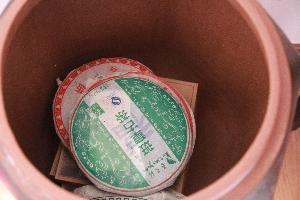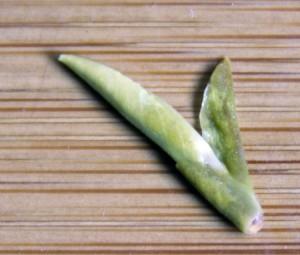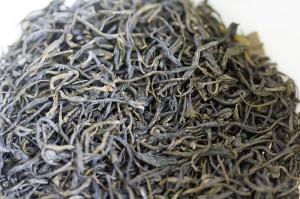Probably the most important piece of information that you should ask before buying a tea is when was it harvested or produced. It is startling that it’s not always readily available considering for certain categories of tea, this is essential information.
So what impact does age have on tea?
It depends on what tea it is.
Teas that Age Gracefully
Certain teas improve with age in fact, their value appreciates with each passing year- with certain caveats that we will discuss later.
The 3 main types of teas that benefit from aging are dark teas, white teas and heavy roasted oolong teas.
Dark Teas (黑茶)

Aging is especially essential for sheng pu-er or raw pu-er. Before the 70s, sheng Pu-er was the only form of Pu-er available with aged sheng known as shu. (For more details you can read this overview of Pu-er).
Young sheng Pu-er tastes bitter, astringent and generally consumption is not encouraged because it is considered very damaging to the stomach (伤胃) in Traditional Chinese Medicine (TCM) belief. Generally consumption is not encouraged within the first 3-5 years of harvest and the taste- as well as health properties- improve with age.
White Teas
There is a saying for white tea- 5 year old white tea is a treasure, 10 year old white tea is an elixir. Hyperbole aside, white tea is another category of tea that improves with age.
Because white tea is the least processed of all types of tea- undergoing only withering and drying- it retains much of the original nature of tea- bitter and ‘damp’ (this refers to TCM nomenclature). With age, white tea actually changes its properties to sweet and ‘cooling’.
This makes it more suited for those who are older and weaker in constitution as well as a source of ‘cooling’ medicinal properties which is essential in TCM treatment.
Heavy Roasted Oolong Teas
Not all oolong teas improve with age, just those that are heavy roasted. The ‘green style’ oolongs for example have a very short shelf life- away from the fridge and when not vacuum packed, they lose their briskness and taste extremely vegetal.
For heavy roasted teas, age has the effect of making it smoother and also more soothing to the stomach. Regrettably my experience with aged oolong teas has been the odd sample or infusion that friends and associates offer me from their private stash (no one has agreed to sell me their stash thus far) so a more in-depth exposition on the virtues of aged oolong tea will have to wait till a later date.
Freshness
For the rest, does it mean the fresher the better?
The short answer is- yes but not too fresh.
Green Teas

However fresh from the farm is not quite the ideal. Experts recommend waiting about a month after harvest time before consumption to allow the ‘damp fire’ to fade which would damage the digestive.
Beyond that, green tea tastes more brisk and smooth when well preserved- heat, moisture and oxygen have the effect and deteriorating the taste and wet leaf appearance of the tea.
Yellow Teas
Yellow teas are similar to green teas in production except with the additional stage of ‘men huang’ which is yellowing the tea with heat and humidity. This helps preserve the storage of yellow tea somewhat and it doesn’t require storage below room temperature and generally can last longer than green tea.
Like green tea, fresh yellow tea tastes better but with good storage you can preserve the brisk and sweet taste.
Green Style Oolong Teas
Green style oolong teas- especially Tieguanyin- have a very short-shelf life. Because of their minimal oxidation and roast, their moisture content is higher than most other teas and hence more subjected to the effects of time.
This is why in China and Taiwan, these teas are usually vacuum packed and kept below room temperature.
Storage
An important proviso in age and taste of tea is the storage condition.
In simplicity, teas don’t simply improve with age they only improve with age if stored properly. Enemies of tea are light, oxygen, heat, moisture and other odors. The best Dahongpao will taste like Pochai Pills if you store it together with your Pochai Pills (I’ve seen this happen).
On the other hand, storage of dark teas requires oxygen and humidity to age- that makes things a little trickier. For further reading on this subject, you can read these articles written by Chan Kam Pong aka Cloud who is one of the best known Pu-er experts among the English speaking world.
For teas that are best consumed when fresh, storage is very important as well. The photo below shows green teas that were left in the open for about a week. No question about the freshness, even though it was less than 6 months old when I conducted this experiment.

See other articles on Selection and Storage of Tea
